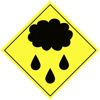If you have reached this stage of the research then your potential building plot has probably survived the desktop study and a site visit and is now a real contender for your self build project.
Here we’ll have a look at some matters that are really an extension of the initial desktop assessment but require more investigation before you take the plunge.
Flood Risk for Your Potential Building Plot

In recent years, we have become all too aware of the increased risk of flooding in the UK. Being in a flood area doesn’t necessarily rule a plot out as a possibility and there are design options to reduce the impact. If the plot is in a flood area then you need to assess the risks and take some advice on design.
Have a look at the Gov.uk website to see if the plot is liable to flooding. It has a postcode search facility for areas throughout the UK and will generate a predicted flood risk map.
Trees and Tree Preservation Orders (TPOs)
 The proximity of trees to your build can have a direct affect on your property, in particular your foundations. If trees are present your designer will need to take account of their position, species, size and the ground conditions when working the design.
The proximity of trees to your build can have a direct affect on your property, in particular your foundations. If trees are present your designer will need to take account of their position, species, size and the ground conditions when working the design.
In addition to the physical implications of trees, there is the prospect of tree preservation orders which can hamper the development of a building plot. TPOs can be placed on individual trees or a group and there are no minimum requirements on the size of tree to which they can apply. Any tampering with a protected tree which could affect its health can result in a hefty fine and its replacement.
A bit of leg work is required here and a trip down to the local authority to view their register will reveal if you are affected.
Services and Drainage
 On your site visit, you should have located the service mains in the main highway and as you progress towards a purchase it is worth contacting the local utilities companies for advice on connections, costs and to request maps highlighting service mains positions. As well as locating services for connections the information helps to avoid pipes and cables when excavating.
On your site visit, you should have located the service mains in the main highway and as you progress towards a purchase it is worth contacting the local utilities companies for advice on connections, costs and to request maps highlighting service mains positions. As well as locating services for connections the information helps to avoid pipes and cables when excavating.
Contaminated Land
 Contaminated land has at some point in time been affected by a pollutant and now poses a threat to human health and the environment.
Contaminated land has at some point in time been affected by a pollutant and now poses a threat to human health and the environment.
Previous industrial land use, accidental spills and poor waste management can all result in contaminated land. Even if there is no visual evidence, the plot may have been affected by a pollutant for hundreds of years.
Studying historical maps is a good start point to determine previous land uses. Check the local library and make copies of maps showing your plot. Follow this up with a visual inspection on the site visit.
Naturally occurring radiation is another cause of contaminated land. The main source is Radon Gas that can pose a risk to health but can be dealt with easily if you are aware of its presence. If your designer is familiar with the area, then they will be aware of any risks and incorporate Radon control measures into the design.
Websites like Landmark work with Ordnance Survey, the Environmental Agency, the Coal Authority and the British Geological Survey to provide information on land contamination.
This research can come in useful as the planning department sometimes require submission of a contamination report as part of the planning application.
Researching these matters and the others discussed in our Buying Land section should go some way to giving you as much information as possible about a prospective building plot and its potential.
Return to Buying Land
Return to Home Page from Research Your Building Plot
